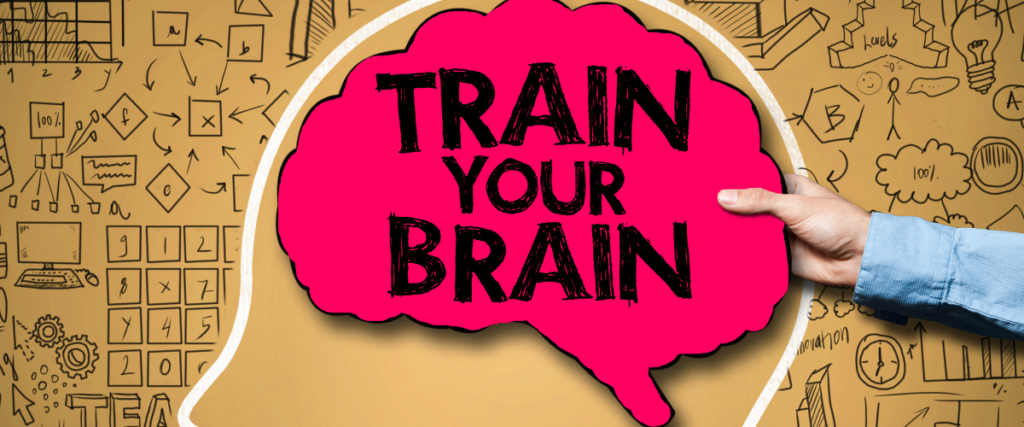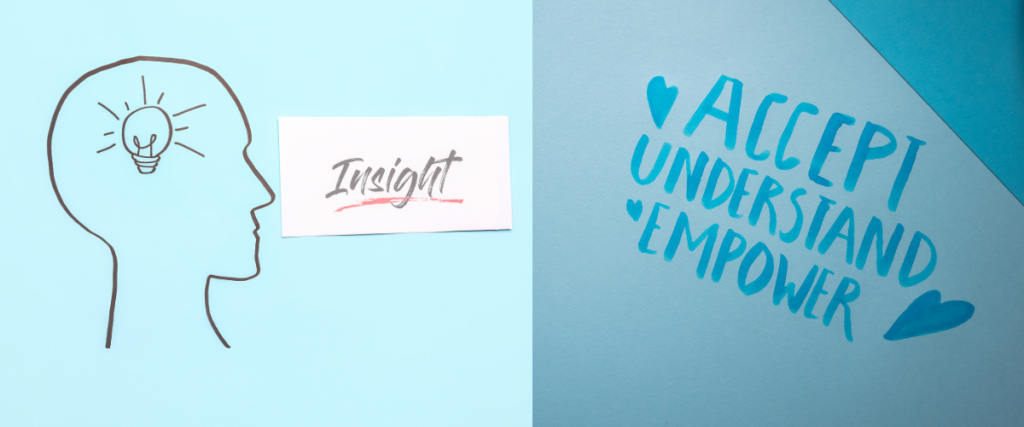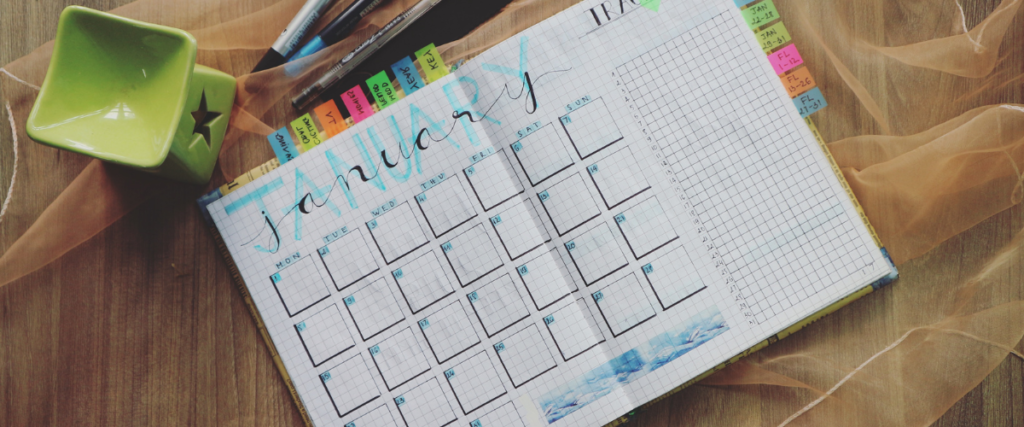The quest for the perfect ADHD planner is real! I own 62 different planners, no joke. I counted them, and I’m pretty sure there will be some more that I didn’t discover on my planner sweep around the house and office.
I have had to stop myself buying another ADHD planner at least 20 times this year. This morning, I even researched one someone else claimed was ‘life-changing’. Except planners aren’t life-changing, not for me. They make me feel useless when I fail to keep up with my good intentions of using them.
So why do I have so many? Here’s the thing. Each time I fail at using a planner, I try to kid myself that it is the planner’s fault. That, somehow, that planner was not right for me. So I buy a new, different one, always convinced this was the ‘one’; this is where I finally became a master planner. ADHD organisation and time planning can be a huge challenge for many of us, and sometimes we have to find our own unique, messy way forward.
I have journal ADHD planner notebooks, bullet planners, and ones for time-blocking. I’ve tried all different sizes and formats and even have a large weekly desk planner pad(now an oversized and overpriced coffee mat).
Time blocking blows my mind. As someone with very little ability to judge how long a task will take, I find it impossible. I’ve tried to time block many times, as a lot of coaches have told me this is the way. But my time optimism means I wildly underestimate how long a task can take, so I end up feeling like an epic failure when I don’t achieve the task in the allotted time frame. Time blocking is not for me.
It wasn’t until I had an epiphany almost a year ago that I stopped forcing myself to use them. Traditional planners just aren’t designed for how my autistic and ADHD brain works. I’d been trying to force myself to make my brain work in a way that it simply can’t and won’t.

Stop trying to force yourself to use an ADHD Planner
I’ve lost count of the number of people who have told me I need to train my brain. That I will master time blocking or the Pomodoro technique if I try harder and stick to it for longer.
The problem is that not only do these tools and techniques not work, but they have a negative effect on my confidence each time I fail to get to grips with them.
The biggest gift I gave myself this year wasn’t a new ADHD planner; it was freedom from having to use one!
Here are three reasons why a traditional ADHD planner might not work for you;
Number 1: Too complex and overwhelming. They are usually packed with multiple lists, tasks, habit tracking and diary entries. I can’t figure out what I need to be doing, and the layouts scramble my brain and confuse me.
Number 2: They are designed for a neurotypical (‘normal’) brain: Traditional planners don’t accommodate the fact that my energy levels and attention span fluctuate. I go between periods of hyperfocus and intense concentration to times when I have a short attention span and little energy.
Number 3: Time awareness: I find it hard to estimate how long tasks will take (time blindness). I typically underestimate the time it will take to do something. So, trying to time-block or organise tasks in a traditional planner is nearly impossible.
And honestly, out of sight, out of mind! I often put my planner down somewhere and can’t remember where it is. Given the 62 I have in my house, the chances of me finding the current one are slim!
So, what’s the answer to achieving our goals if an ADHD planner or diary doesn’t work for us?
Learn how your unique brain works

When I stopped trying to force my brain to work in a way it can’t, I felt the pressure slide away. I decided to put my energy into understanding how my brain works, so I could achieve my goals and set my life up in a way that feels good.
I’m very visual, and I need to be able to constantly see my goals, so I’m clear on what I’m working towards. Daniel Priestley shared some invaluable advice when I was on his KPI program: to be ‘directionally correct’. Not perfect, just directionally correct.
That one piece of advice has helped me let go of the need for perfection and stopped me from procrastinating. So rather than using an ADHD planner, I have clear goals for the year ahead, broken down into quarters and months, and they are all on an A1-size wipe board. I use different coloured pens for the different goals (only four main goals), and I keep it simple. I have the help of a coach to map these out because I struggle to break down the year’s goals into quarters and months. I need someone to talk through it with me to help it make sense and make sure I’m not going off on a tangent.
I then have a weekly mini wipe board with all the tasks I want to complete that week, but not written on specific days. I then wipe them off the list when they are done, so it gets visibly shorter. Wiping them off works better for my brain because if I just tick them off in an ADHD planner when they are done, I’m still looking at the same long list — my brain responds better when the list gets shorter. It’s a mini dopamine hit every time!
I choose tasks each day that match my energy levels and focus, and if something needs to be carried into the following week, then I don’t give myself a hard time about it. Having self-compassion and knowing it’s okay not to do everything on the list is motivating. Taking the pressure and expectation off usually means I achieve more.
If I’m getting lost or confused, or something happens that impacts my goals, I will speak with a coach to help me work through it. I know I need this help, and I don’t hesitate to ask now. Yes, it’s a cost, but I look at it as being the difference between achieving my goals and not — the small investment is always worth it, in my eyes.
Stop trying to make your brain work in a way it can't

That’s the best piece of advice I can give anyone who is struggling to use an ADHD planner or organiser, stop forcing your brain to do something it can’t. ADHD organisation is hard and if planners don’t work for you, then that’s fine. I was also recommended the Pomodoro app many times, but a timer going off every 25 minutes was horrendous for me; it just interrupted my train of thought, and I struggled to get back on track — yet some people swear by it!
Here are some things to consider when it comes to planning;
- Have a vision board with all of your goals on it, both personal and professional. It’s a visual reminder of the life you’d like to create and what you want to achieve.
- If you find planning near on impossible, ask for help or support in writing it all down. VAs (virtual assistants) or a coach can be excellent for this. They can write your goals down to help you break them into monthly goals/tasks, and keep you on track and accountable. If you need help with creating weekly tasks, VAs can be great for this.
- Having an accountability buddy can help. Choose someone that you know is excellent at achieving their goals, which will help you keep you on track, and arrange weekly or monthly calls/meetings with them.
- Apps that help keep your plans and goals in one place, like Asana, Trello or Goals on Track are effective for some.
- Body doubling has been proven to be extremely helpful for some. Work alongside someone who is working on similar projects or tasks.
And remember, if something isn’t working, don’t try and force yourself to keep going with it. Try something else, until you find what works for you. I need to be able to choose my tasks to match my energy and focus levels, which means any planning and goal execution method I use needs flexibility. Don’t set yourself up to fail by choosing a method that will be impossible to stick to long term — it will end up harming your confidence, and ultimately, those goals won’t be achieved.
Do what feels good for you - ditch the ADHD planner

When you’ve got big goals and dreams, but you can’t seem to organise or prioritise to achieve them, it can be demotivating, frustrating and upsetting. I’ve had many tears, as the latest ADHD planner failed me, or the App everyone raved about only served to irritate me.
I now know that Apps and paper planners aren’t my thing, and once I stopped trying to use them, a lot of the pressure fell away.
I know my style of goal setting and planning looks bonkers to some people (I know because ‘some people’ have told me!). I’m visual; I need visual reminders about what I’m working towards. I also need administrative support to ensure I get there, so my VA, coaches/mentors and digital team are my greatest assets. I never used to ask anyone for help or support, fearing it made me look incapable or useless, but now I don’t hesitate.
Freeing up my time and brain space to focus on what I love doing and am good at means that those goals are far more likely to be achieved. I like to think of asking for help as giving someone else the opportunity to shine in what they are really good at. It’s a win/win.
When it comes to goals and planning, do whatever works for you and remember, you don’t need to be perfect — just directionally correct! Step away from the planners if they don’t work for you, save your money and energy!
So, RIP to all the ADHD planners; it’s time to move on. I’m off to round mine up and donate them to someone who can make good use of them!
I hope you have found my blog on ADHD planners helpful. As I mentioned at the start, I write from a place of being both autistic and ADHD, and these are my own experiences. We all have unique and lived experiences.
Until next time, stay brilliant and bold and go shine your light on the world.
If you haven’t taken my Success & Happiness Quiz yet, click the link. You’ll get your results immediately, with bespoke advice and tips, which are easily actionable. It takes less than 4 minutes and it’s fun!
Until next time, Nikki x
